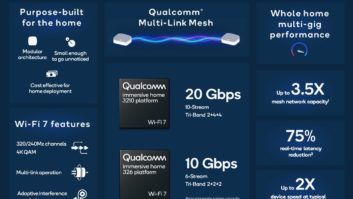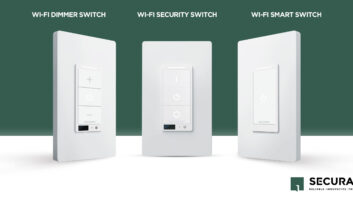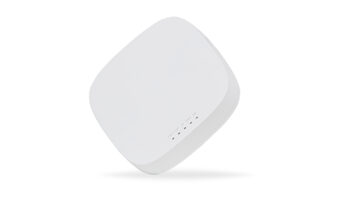Your clients may not see, taste, or smell it, but the network you provide is vital to the success of their smart home installation. The key is to use today’s tools to build that robust, remote-navigable network.
“Most customers need to be educated on why Wi-Fi is not the solution for the whole home,” says Jim Onorato, director of operations, C&B Electric & Security, a Luxul dealer. “I’m not sure why or how that perception became common, but it’s an educational process to explain the network to them. As integrators, we need to be knowledgeable about the networking solutions available that best fit the consumer’s residential space, including the backhaul for Wi-Fi at different price levels to qualify a customer for the right system for their home.”
At Lifestyle Electronics, an Access Networks dealer, system designer Kyle Storms focuses on networking right from the start of any consultation. “I inform the client that networking has become the new utility in any residence or commercial project,” he says. “We discuss performance needs, coverage requirements, and design goals, making sure to relate how we make every effort to place wireless access points where they will maintain a strong, reliable connection yet won’t conflict with the interior design.
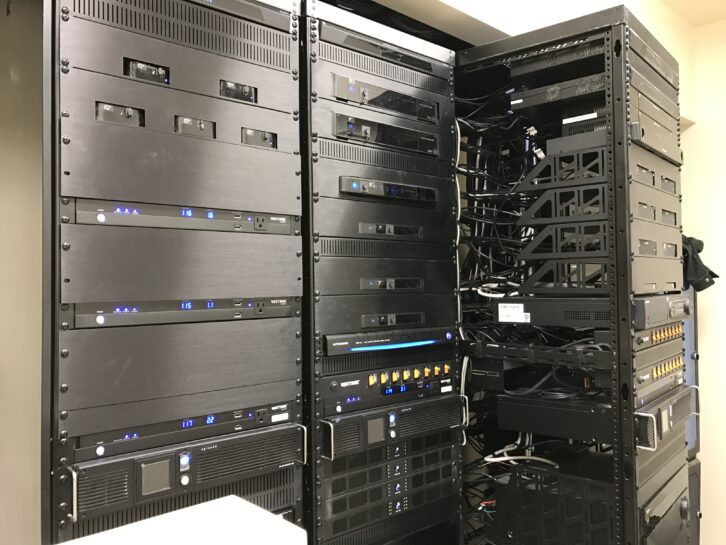
“Indeed, architecture plays a major role in equipment location; we need to be sensitive to material barriers that would impede performance while also integrating products in an eye-pleasing manner. Once the client has this info, we utilize tools like BCS (Basic Configuration Service) and network mapping from Access Networks to create a realistic presentation of the system that shows how the network will be organized and how signals will flow throughout the home. This visual representation of the networking system is similar to an electrical or plumbing diagram.”
The network is the plumbing, so consider what will be connecting to it and where you need coverage at the outset, and you’ll be better poised for a successful installation. — John Henkel, Netgear AV
Netgear AV recommends that the subject of networking is raised on the initial site survey/exploratory conversation, says John Henkel, director of product marketing, Netgear AV. “It’s the same when building a home — all the plumbing needs to be figured out before the kitchen and bath fixtures are determined,” he says. “The network is the plumbing, so consider what will be connecting to it and where you need coverage at the outset, and you’ll be better poised for a successful installation. This is why, at Netgear, we offer free wired and wireless design services to help determine your needs at the outset. Don’t procrastinate, because you’ll have bandwidth and/or coverage issues later on.”
Increasing Demands on the Network
“There’s no question that networking in the home has been elevated to a ‘must have’ over the last few years,” Henkel notes. “Previously, the bandwidth might have been okay to surf the web or stream a movie, but now, with virtual meeting after virtual meeting and with multiple people in the same house while the kids are home from school trying to game or shoot the next viral video, any home network is taxed. Fortunately, networking technologies have evolved, too. New wireless standards like Wi-Fi 6 and 6E and, soon, Wi-Fi 7, enable more people to be online at the same time while still offering outstanding coverage. Plus, with more and more AV and IoT devices (encoders, decoders, door locks, cameras, refrigerators, garage doors, and so on), the network switch has to accommodate more different types of connections than ever. So, switches like Netgear’s fully managed lines can be configured in a snap through certified profiles to ensure the switch is set up correctly the first time.”
Including performance-based networking is becoming more common, Onorato says. “But I don’t think working from home has been as big a factor as entertainment services, which were already migrating toward streaming prior. This could be somewhat related to the pandemic and more people being home, but from our perspective, that evolution was already taking place.”
This is an area where there are too many myths on best practices. The residential consumer electronics industry has done a poor job, at best, of adequately offering non-manufacturer-based S&P. — Jim Onorato, C&B Electric & Security
“Over the last few years, as networking demands have increased dramatically, more devices than ever are being loaded on these networks, requiring more bandwidth and configuration to deliver reliable performance,” Storms says. “Networks are requiring more programming to ensure exceptional connectivity, especially in homes with control systems. With more people working from home, we are seeing residences with more than one home office and occasionally a classroom area for their children. We’ve reacted to this increased burden on the network by deploying more robust Wi-Fi networks and installing more hardwired locations for computers and TVs.
“We are also recommending — and seeing informed clients requesting — multi-gigabit-ready networks to take advantage of the fastest speeds being offered by their internet service providers,” he adds. “Clients are looking for more than the fastest speeds these days, however. They also want smart networks that recognize which devices are in use and that will allocate maximum bandwidth to those devices. They want their video chat calls to remain stable even as they move about the home, while others use the network for streaming entertainment and other applications.”
In the toolbox
Storms has been installing the Access Networks Wi-Fi 6 Access Points with Araknis switches and routers. “They provide the level of performance and stability our clients need,” he says. “Particularly helpful is Access Networks’ Beamflex technology. It enables their access points to adjust automatically based on changes in the environment, tuning the network for optimal performance. The increase in the spatial streams in the higher-end models increases the stability of the network signal to devices with two antennas and spatial streams, including cellphones, tablets, and laptops. Access Networks’ Unleashed feature is convenient in retrofit jobs when running a wire is not possible. Another benefit to our business is Access Networks BCS (Basic Configuration Service), which expedites deployment time tremendously. We use this equipment to provide the best solutions for our clients for modern networking demands.”
C&B utilizes Luxul’s ProWatch for some installations, but a lot of solutions include power management more effectively with automation platforms. “I have always educated myself on various consumer electronics,” Onorato says. “With 29 years of experience, it’s easier today for me to meet with manufacturers and determine how their products fit into the residential space. We need to be flexible in how we build our offerings; there is no one-size-fits-all solution. Maybe one-fits-most, but not all.
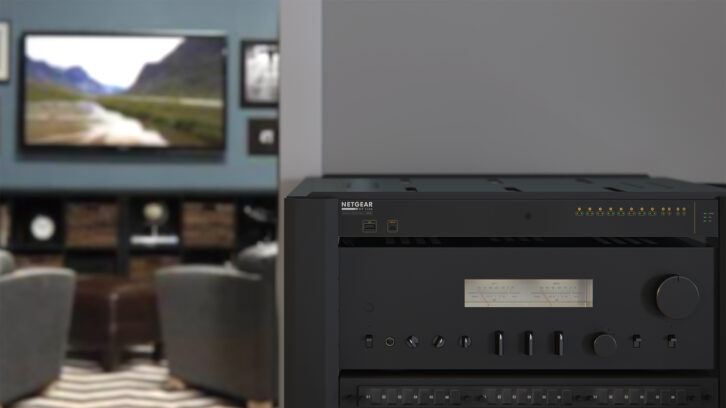
“I have made bullet points and at-a-glance selling tools for my sales staff and project managers to have the educational sales approach. It’s important to educate buyers on why relying on wireless is not the answer for everything. There are additional support products for power management, including PDUs and UPS products. And we are using heat-mapping software for proper deployment and setup. We do not rely on plug-and-pray automatic setup configurations.”
Related: Building Better Networks for WFH and Resimercial Applications
More and more residential integrators are taking advantage of Netgear’s free network design services, Henkel says. “We have two different teams available for free. The Pro AV team helps with the proper wired network design and switch choice, whereas the Pro Wi-Fi team helps with finding the best placement for your wireless access points and includes a free heat map that takes into account the actual building layout and materials.
Clients are looking for more than the fastest speeds these days, however. They also want smart networks that recognize which devices are in use and that will allocate maximum bandwidth to those devices. —Kyle Storms, Lifestyle Electronics
“Additionally, Netgear Insight is the perfect tool for integrators and managed service providers (MSPs) to configure and manage non-AV switches, wireless access points, and mobile hotspots from anywhere,” he adds. “This multi-location/multi-tenant tool brings remote access to these devices, meaning that many times no truck needs to be rolled to take care of a problem; it’s handled remotely. This saves the integrator/MSP time and money and gets the customer back up and running fast.”
For his part, Onorato would like to see more routine dealer training events and support tools. “This is an area where there are too many myths on best practices,” he says. “The residential consumer electronics industry has done a poor job, at best, of adequately offering non-manufacturer-based S&P. Manufacturers need road shows and more frequent web-based content. They also need better rapport with integrators to stay ahead of product releases. It’s not just one, but most CI brands typically develop something and send it off to market, and training is done onsite through tech support. With my background also encompassing corporate-level training, I have to train my staff for these things, as there are no other resources available.”

